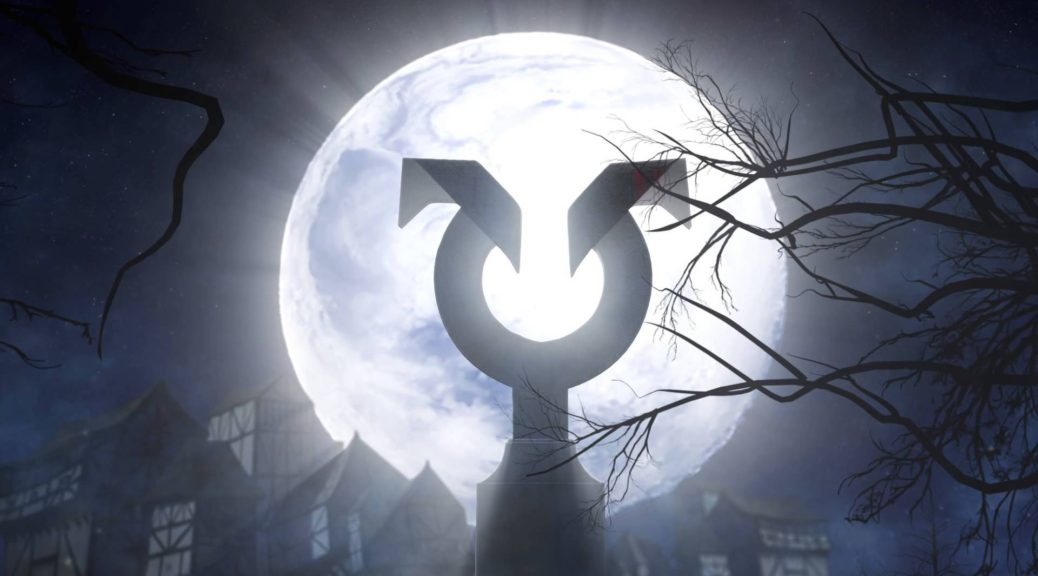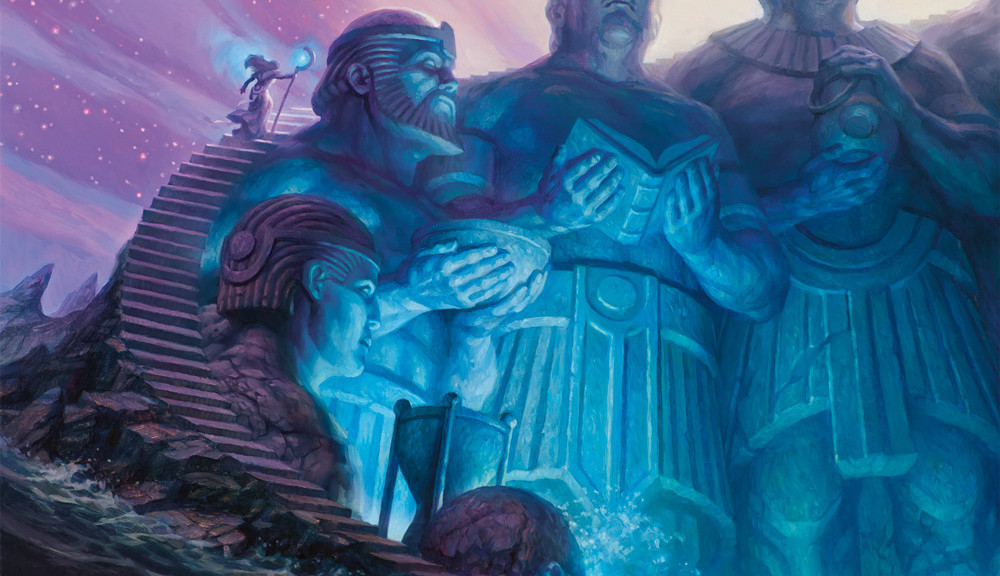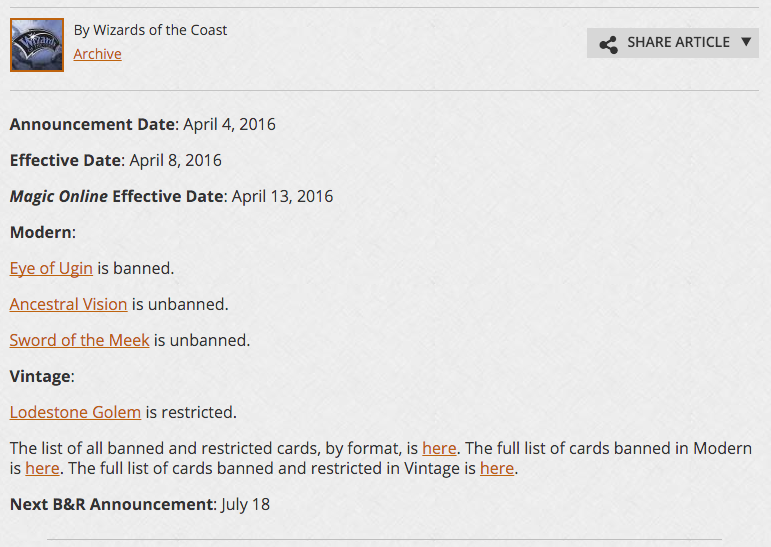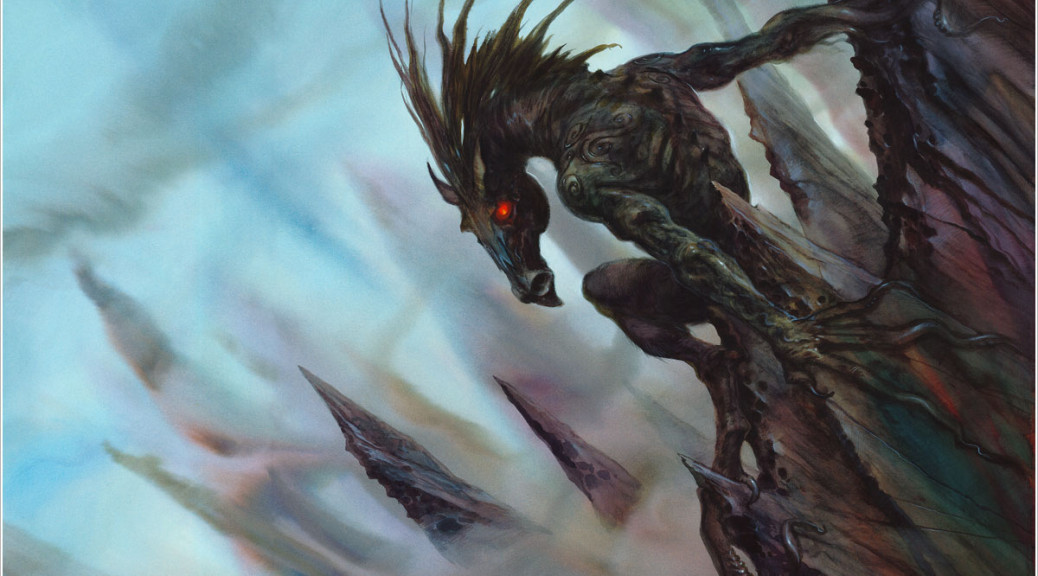Travis Allen
@wizardbumpin
“Oh come ooooooooon,” I groaned exasperatedly. Mike had finally drawn into his Hornet Queen, and with that, the path of the game was now firmly headed in one direction. Hornet Queen would act as a stupendous rattlesnake, preventing anyone from attacking Mike. Eventually it would get cloned. Then it would die, and someone would reanimate it. And then it would die. And brought back with Puppeteer Clique. And so on and so on, until the world was nought but fire, brimstone, and bees. Even drawing an exile effect was dead, as Mike had a sac outlet on the board.
Ten or fifteen turns later, Mike cast Sepulchral Primordial reanimating Diluvian Primordial and Sheoldred, the Whispering One. Sheoldred would reanimate Hornet Queen for the umpteenth time, and Diluvian Primordial would cast spells that had already been cast three or four times. “You need a new deck.”

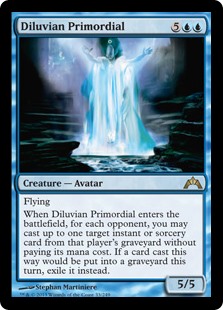
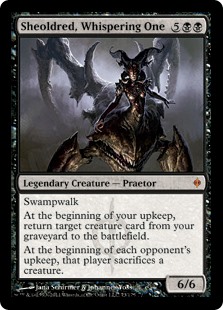
Aside: I’m sure a lot of you reading this don’t see anything wrong with any of this. To me, this is miserable EDH. While the format can be a truly engaging, fulfilling experience, there are three things that stand in the way of a healthy game:
- Recursion/cloning
- Tutoring
- Unlimited hand size
EDH is at its best when it offers fresh, evolving play experiences. That’s the whole point, right? To play cool and weird cards that you don’t see elsewhere. Points one and two lead to a direct reduction in novel gameplay. Reanimating or cloning Hornet Queen (or any creature) eight times isn’t fun or interesting Magic. Casting it once is fine, sure. But over and over? It invalidates so many other creatures, so many other cards, and so many attack steps. It’s not always Hornet Queen, of course, just whatever the biggest and baddest threat on the table is. “Just run exile effects!” Those get rid of whatever the most obnoxious thing is at the time, but it will simply be replaced almost immediately with something else. There’s always a tallest building.
Similarly, tutoring reduces variety because you just end up getting the same few cards over and over. You’re either tutoring for a wrath, the same two or three creatures, or some giant game-warping permanent. Instead of playing what you draw — essentially playing your whole 99 cards — you play with what you tutor for. Suddenly you’re only casting maybe 30% of the cards in your deck, because you tutor for the same ones each and every game.
Unlimited hand size is unhealthy for two reasons. Not only does the unhindered player’s turns take an excessive amount of time because they have to decide which of their 28 cards they want to cast that turn, but because the dynamic of the game changes. Instead of several players battling for position, it becomes all-against-one, with a slow slog through one gigantic hand’s worth of resources. That player is going to hit their land drops every turn and keep presenting major threats as everyone else tries to stop them. Eventually the other three at the table will run dry on resources after answering the first 27 cards, and it’s the 28th that wins the game. It’s a tedious process that elicits a lot of head-desk reactions.
Ok, enough of my EDH soapbox. I told Mike he needed a new EDH deck, to which his response was that he agreed, and wanted to build one, but he wasn’t interested in trying to buy all the odds and ends needed to get it together. It can be a time consuming and expensive process. I commented that I’ve been successful finishing EDH decks using PucaTrade, and Mike was into it.
In fact, there’s a collection of specific goals that PucaTrade is excellent for. Last week I wrote about the state of Puca’s market, reasonable expectations for users, and the dynamic of exchange rates. This week I’m going to put some of that into concrete use scenarios that will help you maximize the utility of the product.
The rest of this content is only visible to ProTrader members.

ProTrader: Magic doesn’t have to be expensive.
